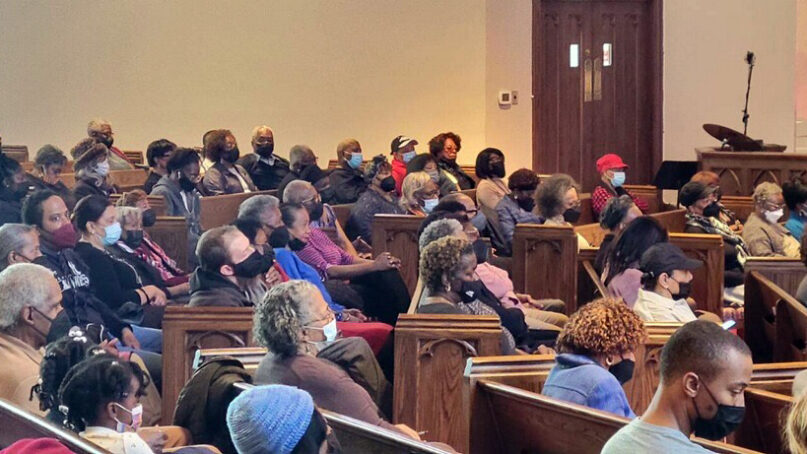(RNS) — As the leader of an umbrella group of Black denominations, the Rev. W. Franklyn Richardson sees the state of the Black church from a bird’s-eye view.
And as the senior pastor of a predominantly Black church in Mount Vernon, New York, north of Manhattan, he also witnesses up close how a 3-year-old pandemic has changed the churchgoing culture for which many African Americans have been known.
After gathering in favorite pews and hearing sermons and songs in person, many churchgoers have come to relish the convenience and comfort of worshipping from home.
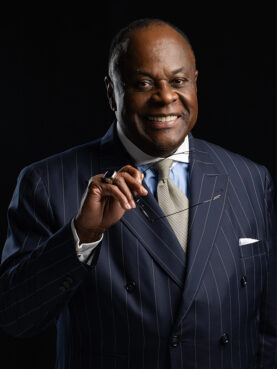
The Rev. W. Franklyn Richardson. Courtesy photo
But as Easter approaches, leaders of some of those denominations cautiously hope for a resurrection in the numbers of people who return to the pews.
“The last few months we have seen some recovery in the African American church in terms of people coming back to church,” said Richardson, chairman of the Conference of National Black Churches. “It’s not fully back by far but it’s a hopeful sign they’re coming back.”
Expectations for many Black pastors are tempered by the realities that some churches have closed permanently while others are still harnessing technology to bring services into their members’ homes and phones.
Bishop J. Drew Sheard, presiding bishop of the Church of God in Christ, has seen the lows and highs of the Black church since the pandemic began in 2020.
RELATED: Black clergy memorialize the dead, ask government to address disparities
Five of the top leaders of the denomination by his reckoning were lost to COVID-19, along with many members of his church nationwide. Anxiety about the pandemic has continued to keep people away from in-person worship.
“That fear does not seem to prevail when they go to sports activities or the mall,” said Sheard. “But they have been invoked with fear that you can catch COVID at church.”
He estimates that at least 75 to 100 churches affiliated with COGIC — which claims about 12,000 congregations — have closed permanently since the start of COVID-19 but admits that could be a low estimate.
According to the Pew Research Center, Black Protestants outrank all other U.S. religious groups in choosing to worship outside of brick-and-mortar locations, with 54% saying they took part in services online or on TV in the previous month. Sheard and other top denominational leaders say those findings have been borne out in their faith groups’ congregations.
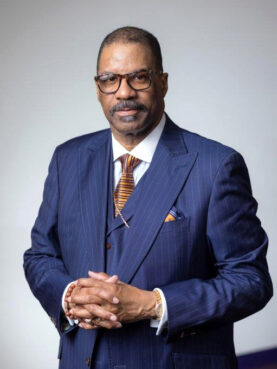
Bishop J. Drew Sheard. Courtesy photo
An earlier survey by Exploring the Pandemic Impact on Congregations, a project of the Hartford Institute for Religion Research, found that in the summer of 2021 African American churches were four times less likely than other churches to be offering only in-person worship.
“Anecdotally, and in conversations with groups of churches and pastors, it seemed to me that these patterns were still similar, that Black churches were more likely to have members worshipping online, less likely to have been back to pre-pandemic strength,” said Scott Thumma, the project’s principal investigator, of what he’s learned in the last six months.
Sheard hopes Easter will be a turning point.
“My expectation is that I will see more people,” said the self-described “minister of optimism” who also is the senior pastor of a COGIC congregation in Detroit. “I think that more people are vaccinated. More people have received their booster shots. And I think that more people are — their faith is being regained. So I look forward to seeing more people.”
Like Sheard, Bishop Kenneth Monroe, senior bishop of the African Methodist Episcopal Zion Church, also hopes for bigger turnouts for Easter.
“Now it’s going be different because of the restraints that we have as it relates to COVID,” said Monroe, who said he expects his longtime church in Red Springs, North Carolina, will continue to have mask wearing and temperature checks on the holiest day of the Christian year.
“But in every avenue that they can find to celebrate, they need to, because this is the main event.”
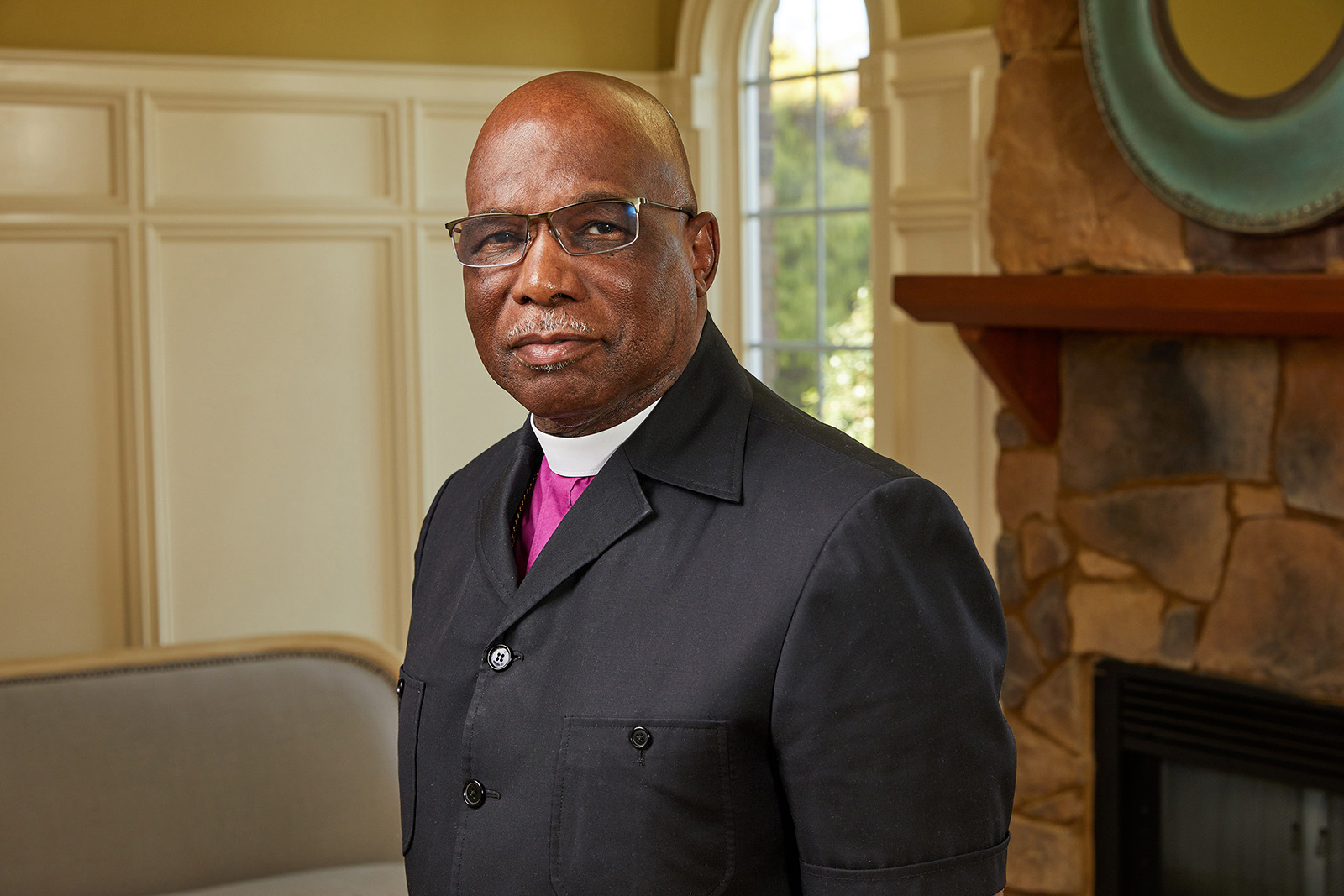
Bishop Kenneth Monroe in 2019. Photo by Robert A Lisak
Monroe, who oversees AMEZ congregations in Eastern North Carolina, describes his denomination’s churches as “surviving” and “on our way back” after the logistical difficulties that have come with the pandemic. But some churches that pivoted to online worship services, Sunday school lessons and board meetings have stuck with the same remote services they resorted to at the beginning of the pandemic.
“A good number of them are still doing virtual, which does not reach as many people in the rural areas as we thought we could because of the broadband: The internet service is not good,” he said. “A lot of our congregations are doing hybrid services because I don’t think we’re ever going to stop doing virtual service. That will always be around.”
But, even recently, some churches, and some pastors who are not internet-savvy, continue to use conference calls for worship and meetings, Monroe said.
Bishop Adam Jefferson Richardson, senior bishop of the African Methodist Episcopal Church, said his denomination’s churches are “doing as well as can be expected,” with some continuing to use conference calls and giving congregants the option of meeting via Zoom.
“The church has left the building,” he said. “If you’re looking for us, you’ll find us almost everywhere, maybe even except the building. So I’m trying at this point, however, to invite our people to come back to the building. But we are also offering hybrid opportunities to be present in the virtual space.”
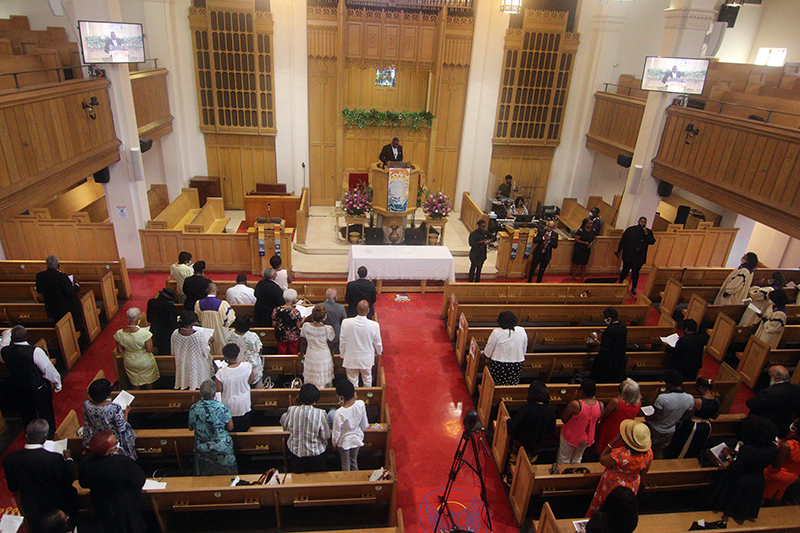
Bethany Baptist Church meets in Brooklyn, New York, in 2021. Photo courtesy of CNBC
Richardson, who is the leader of the AME Church’s district based in Texas, believes AME congregants will turn out for worship on Easter Sunday, but many still won’t be there in person. Three years after the U.S. went into pandemic lockdown — when then-President Donald Trump predicted that people would soon be at Easter services — the senior bishop predicts that for many, that will still not be the case.
“I do think people will still be engaged, in terms of these new modalities, to find a place to worship,” he said. “I don’t think that the worship experience is going to be as long but I do predict that it will be as meaningful. And I think it will primarily be of a hybrid nature. Half the congregation will be present and the other half will be watching you on Facebook or on Zoom.”
W. Franklyn Richardson, who also is host of the Conference of National Black Churches’ new “Healing & Hope” program on the Impact Network about Black churches and COVID-19, said he thinks “maybe 50% of the church is back on Sunday morning” in person for the sole service for his New York congregation.
About 700 fill the sanctuary at Grace Baptist Church now, when more than 1,400 were spread over three worship services before the pandemic.
“It looks like we’re headed towards a second service,” he said, but first he’ll have to see what Easter service turnout is like.
“The impact is not over yet but we see signs of church being normal,” three years after the pandemic’s start, he said. “Normal is a fluid word. Normal is change. Change is normal.”
RELATED: Black churches lagged in moving online during COVID
